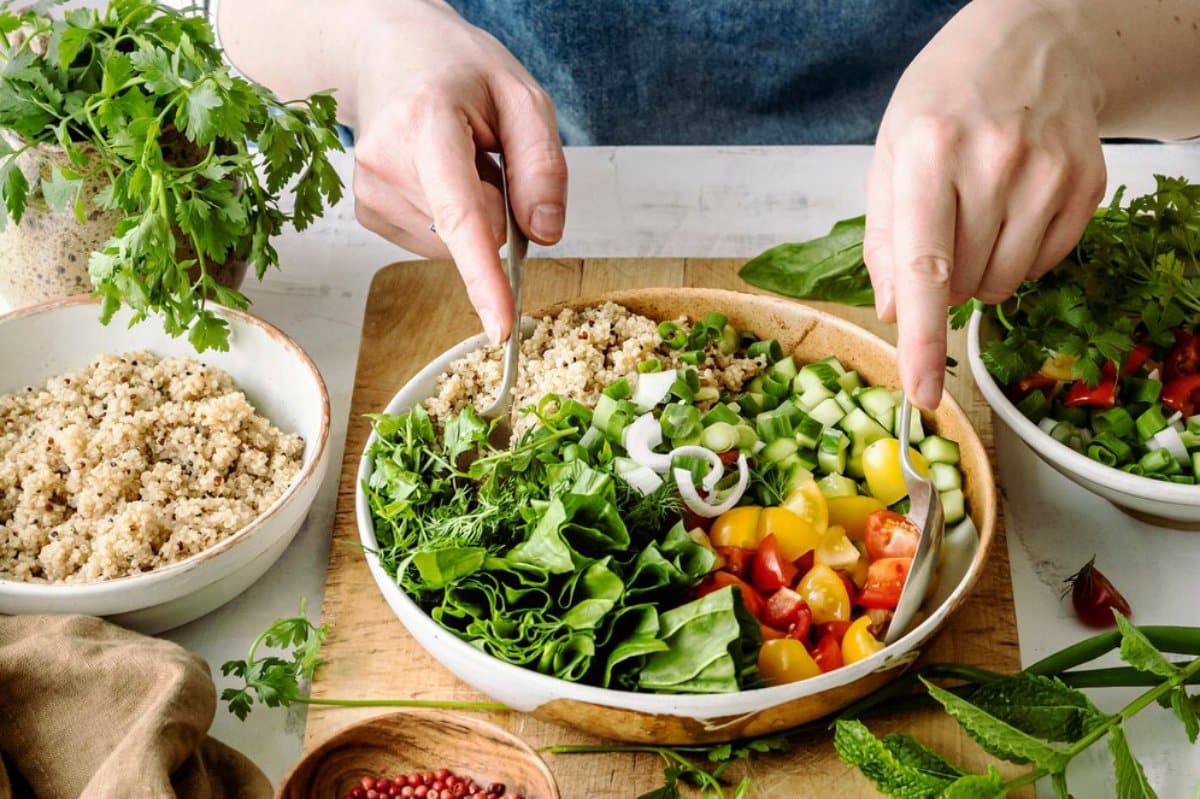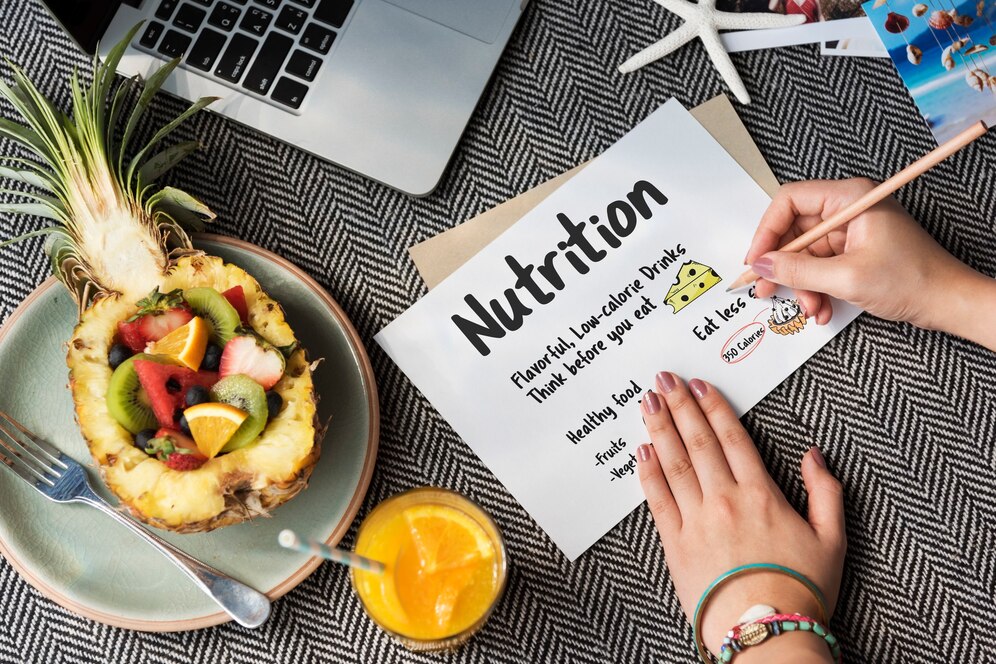
How to Create a Balanced Plant-Based Diet
Adopting a plant-based diet has become increasingly popular, not only for ethical reasons but also for its numerous health benefits. A well-balanced plant-based diet can promote heart health, reduce inflammation, and lower the risk of chronic diseases. However, ensuring balanced nutrition while avoiding animal products requires thoughtful meal planning to meet all essential nutrient requirements.
Whether you’re transitioning to a vegan lifestyle or looking to incorporate more plant-based meals into your routine, understanding the principles of plant-based nutrition can help you create a sustainable, nutrient-rich diet. This guide explores key concepts, provides a step-by-step approach to planning balanced meals, and highlights expert tips to ensure long-term success.
Core Concept: Understanding Plant-Based Nutrition
What is a Plant-Based Diet?
A plant-based diet is all about embracing the bounty of nature. It focuses on whole, minimally processed foods. These include vibrant fruits, crisp vegetables, hearty legumes, crunchy nuts, nutrient-rich seeds, and wholesome grains. The goal? To sidestep or reduce animal products—taking a step toward a greener plate. This philosophy includes tasty dietary patterns. Each one offers delicious and nutritious choices.
- Vegan Diet: Excludes all animal products, including dairy, eggs, and honey.
- Vegetarian Diet: Eliminates meat and fish but may include dairy and eggs.
- Flexitarian Diet: Primarily plant-based but occasionally includes small amounts of animal products.
Key Nutrients to Prioritise

While a plant-based diet can be highly nutritious, certain nutrients require special attention to prevent deficiencies.
- Protein: Essential for muscle growth, repair, and overall body function. Sources include lentils, chickpeas, tofu, tempeh, quinoa, and nuts.
- Iron: Supports oxygen transport and energy production. Plant sources such as spinach, lentils, and pumpkin seeds should be paired with vitamin C to enhance absorption.
- Calcium: Vital for bone health. Sources include fortified plant milks, leafy greens, and almonds.
- Vitamin B12: Essential for nerve function and red blood cell production. Since it’s primarily found in animal products, supplementation or fortified foods are recommended.
- Omega-3 Fatty Acids: Support brain and heart health. Flaxseeds, chia seeds, and walnuts provide ALA (alpha-linolenic acid), which the body converts to EPA and DHA.
- Zinc: Supports immunity and metabolism. Found in legumes, seeds, and whole grains.
Step-by-Step Guide: Building a Balanced Plant-Based Diet
1. Plan Your Macronutrient Balance
Ensure that your diet includes a healthy balance of macronutrients:
- Carbohydrates: Focus on complex carbs such as whole grains, legumes, and vegetables to provide sustained energy and fibre.
- Proteins: Include a variety of plant-based protein sources such as beans, lentils, tofu, and quinoa to meet daily protein requirements.
- Fats: Incorporate healthy fats from avocados, nuts, seeds, and olive oil to support brain health and hormone function.
2. Include a Variety of Fruits and Vegetables
Ideally you’ll be incorporating plenty of colourful fruits and vegetables to make sure you’re getting a diverse array of vitamins, minerals and antioxidants.
- Leafy Greens: Kale, spinach and Swiss chard offer calcium, iron and magnesium.
- Cruciferous vegetables: Broccoli, cauliflower and Brussels sprouts are rich in fibre, vitamins and anti-inflammatory compounds.
- Colourful Vegetables: Carrots, bell peppers, and sweet potatoes are exceptionally high in beta-carotene and antioxidants.
3. Prioritise Protein-Rich Foods
For protein needs, include different sources like:
- Legumes: lentils, chickpeas, black beans, and peas.
- Soy Foods: Tofu, tempeh and edamame.
- Grains and pseudo-grains: Quinoa, amaranth and buckwheat are whole grains that offer complete proteins.
- Nuts and Seeds: Almonds, chia seeds, and hemp seeds add protein and healthy fats.
4. Fortify Your Diet with Key Micronutrients
To avoid deficiencies, include fortified foods and consider supplementation when necessary:
- Vitamin B12: Opt for fortified cereals, plant milk, and nutritional yeast, or take a reliable supplement.
- Calcium and Vitamin D: Choose fortified plant milk and leafy greens, and ensure adequate sun exposure or consider a vitamin D supplement.
- Iron and Zinc: Incorporate legumes, seeds, and whole grains while pairing with vitamin C-rich foods to enhance absorption.
5. Incorporate Whole Grains and Fibre-Rich Foods
Whole grains and fibre are essential for digestive health, stabilising blood sugar, and promoting satiety. Include options such as:
- Brown Rice, Quinoa, and Barley: Provide complex carbs and essential minerals.
- Oats and Whole Wheat: Excellent sources of fibre and plant-based protein.
- Legumes and Lentils: High in fibre, promoting gut health and balanced digestion.
6. Stay Hydrated and Monitor Electrolytes
Hydration is crucial, especially when consuming a high-fibre diet. Aim to drink at least 2 litres of water daily and include hydrating foods such as cucumbers and watermelon. Electrolytes, including sodium, potassium, and magnesium, help maintain fluid balance and should be replenished through a balanced diet.
Pro Tips: Optimising Your Plant-Based Meal Planning
1. Combine Proteins for Optimal Amino Acid Profile
Most plant proteins are incomplete. But when you combine legumes with grains, like rice and beans, you get a complete amino acid profile. This way, you get all the essential amino acids you need.
2. Meal Prep for Convenience

Cooking grains, legumes, and roasted veggies in batches can make meals easier. It also keeps healthy options on hand.
3. Experiment with New Recipes
Explore plant-based versions of your favourite dishes to keep meals interesting. Try making lentil curries, chickpea stews, or tofu stir-fries.
4. Use Nutritional Yeast for Flavour and Nutrients
Nutritional yeast gives dishes a cheesy, savoury taste. It also provides vitamin B12 and protein.
Important Considerations: Avoiding Common Pitfalls
1. Monitor Nutrient Intake

A plant-based diet can be a colourful palette of nutrients. However, keep an eagle eye on essential players: vitamin B12, iron, calcium, and omega-3 fatty acids. Regular blood tests act as your health check-up detectives, unveiling any sneaky deficiencies. Stay nourished and thrive!
2. Avoid Over-Reliance on Processed Foods
Some vegan foods, like mock meats and packaged snacks, may have high sodium and preservatives. Focus on whole, minimally processed foods to maintain balanced nutrition.
3. Watch Your Portion Sizes
Plant-based foods usually have fewer calories, so it’s easy to misjudge portion sizes. Ensure you’re consuming enough calories to meet your daily energy needs.
Best Practices & Additional Insights
1. Diversify Your Diet
Incorporate a variety of plant foods to ensure a broad spectrum of nutrients. Rotate different vegetables, grains, and legumes to maintain balanced nutrition.
2. Supplement When Necessary
Vitamin B12 is the most critical nutrient that may be lacking in a vegan diet. Supplementing with a reliable B12 source is essential to avoid deficiency. Consider omega-3 and vitamin D supplementation if needed.
3. Incorporate Fermented Foods for Gut Health
Fermented foods like sauerkraut, kimchi, and kombucha help gut health. They add good probiotics to your diet. A healthy gut microbiome enhances digestion and nutrient absorption.
4. Listen to Your Body
Pay attention to how your body responds to different foods. Adjust your diet if you notice signs of nutrient deficiencies or digestive discomfort.
Quick Guide: Key Steps for a Balanced Plant-Based Diet
- Macros do matter: Eat some carbs, protein and healthy fats
- Diversity in Fruits & Vegetables: Look for a variety of colours and types.
- Add protein-rich foods: Learn to mix legumes, grains and soy.
- Pack in Vital Micronutrients: Think B12, calcium, and iron sources
- Whole Grains and Fibre are Important: Aid digestion and fuel activity.
- Monitor Your Nutrient Intake: Consider supplements for B12, omega-3s and vitamin D.
FAQs
1. Is it difficult to get enough protein on a plant-based diet?
Not at all. Eat a variety of legumes, soy products, grains, nuts, and seeds. This helps you meet your daily protein needs. Combining different plant proteins ensures a complete amino acid profile.
2. Do I need to take supplements on a plant-based diet?
Yes, vitamin B12 supplementation is essential for vegans. Supplementing with omega-3 fatty acids, iron, and vitamin D can help, depending on individual needs.
3. Can I get enough calcium without dairy?
Yes, calcium can be obtained from fortified plant milk, leafy greens, almonds, and tofu. Including these foods regularly helps maintain bone health.
4. How can I avoid feeling hungry on a plant-based diet?
To stay satisfied, incorporate fibre-rich foods such as legumes, whole grains, and vegetables. Healthy fats from avocados, nuts, and seeds also promote satiety.
5. Is a plant-based diet suitable for children and pregnant women?
A thoughtfully curated plant-based diet can nourish every stage of life, from pregnancy to childhood. Yet, it’s essential to pay special attention to vital nutrients. Ensure your intake of iron, calcium, vitamin B12, and omega-3 fatty acids is ample. After all, health is a garden that flourishes with the right care.
Conclusion: Sustaining a Balanced Plant-Based Lifestyle
Embracing a plant-based diet is like unlocking a treasure chest of health. It can lower the risk of chronic diseases while boosting your overall vitality. Understanding plant-powered nutrition helps you build a diet full of macronutrients and micronutrients.
With a sprinkle of thoughtful meal planning and a dash of creativity, this lifestyle turns delicious. Supplement when needed, and remember: variety is the spice of life. A vibrant array of plant foods will keep your journey exciting and nourishing.
Stay attuned to your nutrient needs and venture into the world of new recipes. With every meal, you’ll not only savour delightful flavours but also foster a wholesome and fulfilling plant-based lifestyle for the long haul.


